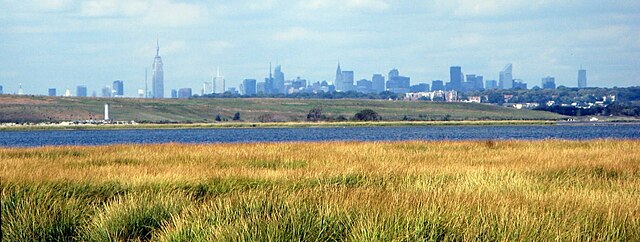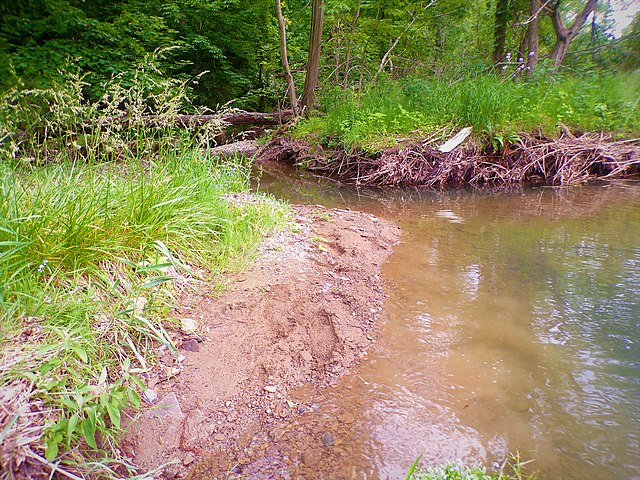Typha is a genus of about 30 species of monocotyledonous flowering plants in the family Typhaceae. These plants have a variety of common names, in British English as bulrush or reedmace, in American English as reed, cattail, or punks, in Australia as cumbungi or bulrush, in Canada as bulrush or cattail, and in New Zealand as reed, cattail, bulrush or raupo. Other taxa of plants may be known as bulrush, including some sedges in Scirpus and related genera.
Typha
Typha at the edge of a small wetland in Marshall County, Indiana, United States
Typha latifolia (蒲, gama) in Japan
Typha angustifolia at the edge of a reservoir in Croatia
A wetland is a distinct ecosystem that is flooded or saturated by water, either permanently for years or decades or seasonally for a shorter periods. Flooding results in oxygen-free anoxic processes prevailing, especially in the soils. The primary factor that distinguishes wetlands from terrestrial land forms or water bodies is the characteristic vegetation of aquatic plants, adapted to the unique anoxic hydric soils. Wetlands are considered among the most biologically diverse of all ecosystems, serving as home to a wide range of plant and animal species. Methods for assessing wetland functions, wetland ecological health, and general wetland condition have been developed for many regions of the world. These methods have contributed to wetland conservation partly by raising public awareness of the functions some wetlands provide. Constructed wetlands are designed and built to treat municipal and industrial wastewater as well as to divert stormwater runoff. Constructed wetlands may also play a role in water-sensitive urban design.

Marshlands are often noted within wetlands, as seen here at the Jamaica Bay Wildlife Refuge in New York City.
Sunrise at Viru Bog, Estonia
Wetlands contrast the hot, arid landscape around Middle Spring, Fish Springs National Wildlife Refuge, Utah
Humid wetland in Pennsylvania before a rain.








